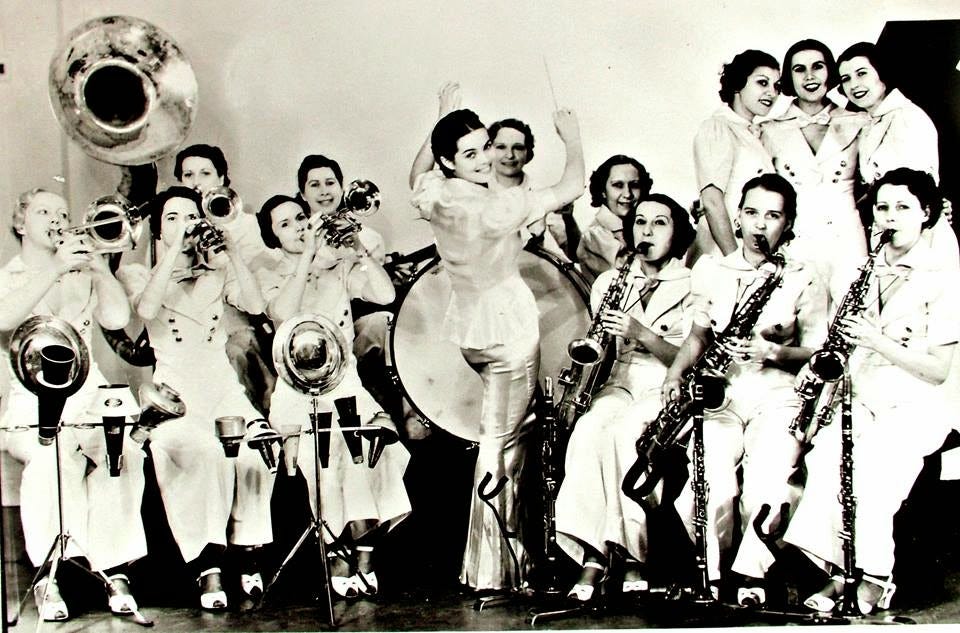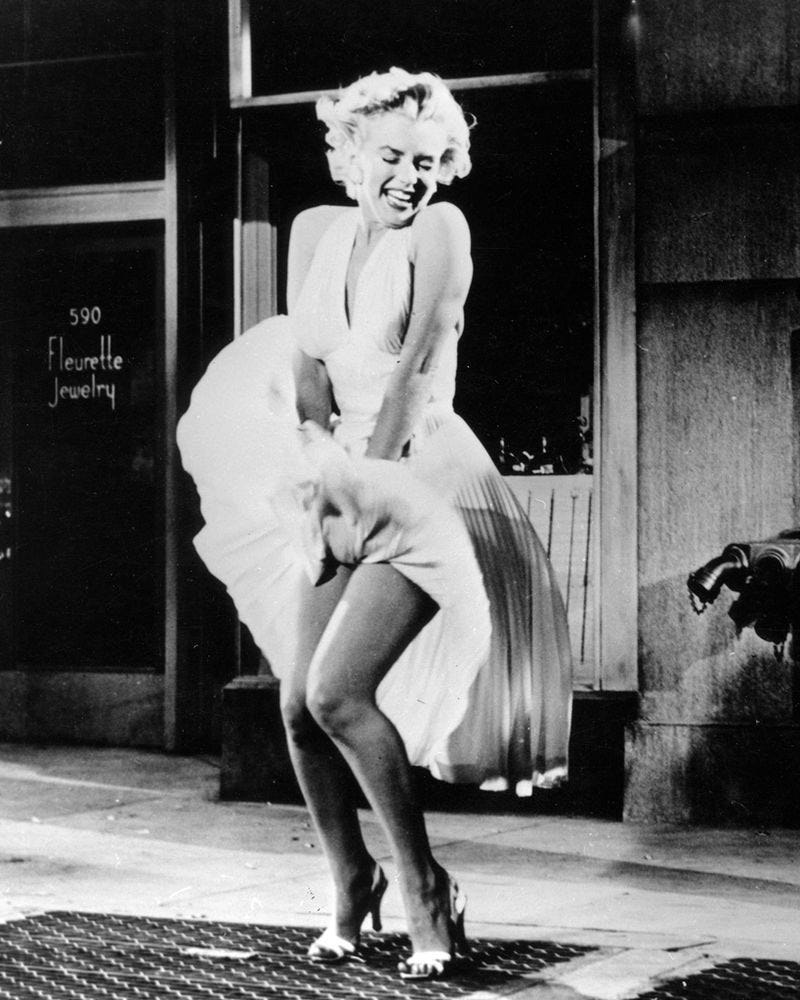
A Woman You Should Know — Rita Rio the Sweetheart of Swing
A Woman You Should Know — Rita Rio the Sweetheart of Swing What started as a publicity stunt surprisingly led to a fulfilling career as “the |
What started as a publicity stunt surprisingly led to a fulfilling career as “the outstanding orchestra leader” of a popular all-girl band.
She was born Eunice Westmoreland in Miami, Florida in 1914. She would use many names during a diverse career as a showgirl, musician, orchestra leader and actress. Both her parents were of African American heritage and she was gorgeous.
Moving to Philadelphia her father ran a restaurant where as a young girl Eunice began entertaining the customers. As a teenager she became Una Villon and danced as a chorus girl in nightclubs, including Nil’s T. Granlund’s Paradise Restaurant, one of the premier entertainment venues in Manhattan. Granlund, nicknamed N.T.G. was a friend of movie star Jean Harlow, whose career he helped advance. He would be responsible for hiring innumerable chorus girls who would dance onto fame and fortune. The Paradise would feature the likes of fan dancer Sally Rand and silent movie star Lina Basquette. N.T.G.’s partner, or benefactor, was Charlie Sherman who would later be found buried under quick lime at an abandoned barn, on property formerly owned by a mobster associated with a New York gang, the Amberg mob. Sherman had last been seen leaving the Paradise.

Una soon caught the eye of naughty impresario Earl Carroll, a convicted felon and “glorifier of beauty.” In 1926 Carroll through a party to end all parties, and as it turned out one that ended (briefly) his freedom. A celebrity-filled night at his theatre on Broadway turned into a drunken bacchanal with a naked chorus girl bathing in a tub of illegal booze, which was the problem. It was Prohibition and the producer got caught telling the Grand Jury a big fat lie. There was no booze. Sent off to prison he was soon back at his theatre producing his series of Vanities, there were eleven in all. He gave his closest rival, Flo Ziegfeld and his Follies a run for his money. They were lavishly produced, skimpily costumed — nudity ruled the stage — extravaganzas starring the top talent of the day, usually stolen, or bribed from the stages of Ziegfeld.
Ziegfeld was the “Glorifier of the American Girl.” He liked his women elaborately costumed. To outdo him Carroll declared he would have his girls as nude as possible. And then some. He spent many different occasions in front of a judge defending himself and his talent. Both producers extolled the young beauties, some barely in their teens. Each claimed to have the most beautiful women in the world grace their stages.
As Una Vilon, Una was cast in Carroll’s Murder at the Vanities. The petite, 5 foot beauty was not your average chorus girl, besides singing and dancing she played several instruments, including the clarinet, drums, saxophone and piano.

Chorus girls and mobsters go together like rhinestones and feathers and she began keeping company with Louis “Pretty” Amberg, a Russian born gangster who had migrated to New York with his family. A snappy dresser, who wore a diamond watch and diamond cuff-links. At the time he was living in a fancy Manhattan hotel. Amberg and three of his four brothers would be accused of murder, kidnapping and worse (remember Charlie Sherman’s “exit” above?). Louis himself was apparently quick tempered, several times stabbing those that irked him with a fork, including comedian Milton Berle after Berle made a snide remark on stage about Amberg’s date. Berle required stitches in his chin.

In 1935 Amberg’s brother was murdered, less than a month later Pretty himself disappeared. His bound and nude body was discovered in a burning car in Brooklyn. He had been hacked with an axe before being set on fire. Rita Rio, as she was now going by, was questioned by the FBI about her burnt beau. She claimed he was polite and respectful, his gifts were tasteful. They enjoyed horseback rides through Central Park. The only catch was she knew him as Cohen. “All he bought me was candy,” she claimed.
Both Rita and the movie industry presented her as being of Mexican heritage. It was claimed she was born in Mexico City. Her mother once had to pass as her maid in a hotel while traveling. She sang and danced opposite Eddie Cantor in the film “Strike Me Pink” but Hollywood was barely interested.

In 1936 a publicity stunt was cooked up where Rita would lead an (ironically) all white, all-girl orchestra, entitled “Rita Rio and her Rhythm Girls.” An African American woman passing as a Spanish actress leading an all white band. It was not uncommon at the time for certain ethnicities to “pass” as white. Her band was billed as “one of the best dance band units on tour today.” (Cumberland Evening Times, March 4, 1937). Twelve to fifteen women showed the men how it was done, burning up the dance floors across America.
As popular as all-girl bands were (and yes they were called girls) they had their critics who despised and denigrated the all-girl bands as being nothing more than eye candy. Author Sherrie Tucker of Swing Shift tells us it was “essential” the leader be glamorous and Rita was, with an “undulating torso” and long chestnut-colored, hair green eyes and a knockout figure. But she also had talent.
The tours were so successful Rita continued working to sold-out ballrooms, hotels and nightclubs. Rita, called a “Mexican tornado of rhythm is a stylist in her own right.” (Cumberland evening times July 6, 1936). She was a sexy, big personality. She would tour for the next four years, employing Hollywood headliners whose salary was so great it left her with barely any pocket change.
The closest thing she came to controversy was allegedly introducing audiences to the dance the “Big Apple” transporting the steps from South to North. One newspaper claimed “the new dance . . . originated . . . from negroes doing it in a night club.” Maybe a sly nod to her origins.

Next stop was a return to Hollywood and another change of name. Finally she, or the studios, settled on Dona (pronounced Don-ya) Drake. Bob Hope was said to have a serious crush on her. She was cast in a slew of minor ethnic roles in films starring Dorothy Lamour (a good friend and mentor) and Bette Davis. She played Rita Hayworth’s sister in “You Were Never Lovelier.” In 1944 she married Academy Award winning fashion designer William Travilla after a 10 day romance. Travilla would go on to design many of Marilyn Monroe’s favorite outfits on and off the screen, including the now iconic off-white cocktail dress in The Seven Year Itch. Travilla claimed to have an affair with Marilyn who often called him in the middle of the night as he lay in bed next to Dona. As a kid, “Billy” Travilla had been obsessed by burlesque — which proves my theory that all roads lead back to burlesque. The teenager used to walk past the many burlesque theatres in Los Angeles, finally plucking up enough courage to sneak in and attend a show. He either began sketching or designing costumes for the strippers.

Dona had a daughter with Travilla and continued in minor roles in films, hiding “mild” epilepsy and a growing mental illness. She would separate from her husband but never divorce, relinquishing custody of her daughter, feeling Travilla would better be able to take care of her.
This multi-talent, beautiful yet unassuming woman, one of the rare few to lead an all-girl band died quietly in 1989. Her ashes were scattered out to sea.
For my life in pictures follow me on IG @lesliezemeckis or FB under the same.

Comments